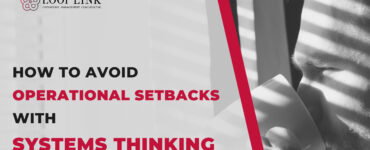One of the core aspects of my role as an Operations Coachsultant™ is assisting my clients with optimizing and enhancing their customer success journey.
This includes ensuring customers receive high-quality service from the very beginning of their journey to the very end.
For today’s blog post, I’ll be focusing on the latter.
The end of a client relationship is one of the most crucial milestones in the customer success journey. (I’ll explain why in just a moment!)
This is why I am passionate about helping CEOs and business owners strengthen their offboarding process and close any gaps in their farewell framework.
But before I begin discussing client offboarding best practices, I’d like to touch on some of the fundamentals.
What is Client Offboarding?

Client offboarding refers to the process your company utilizes when saying goodbye to a client. The goal of offboarding processes is to increase the likelihood of clients returning to your services in the future, maximize referral rates, and preserve the positive experience you have created and delivered to the client.
Why is Client Offboarding Important?
There are three primary reasons why business owners should care about customer offboarding. They are:
1. The Peak-and-End Rule
The peak-and-end rule is a psychological heuristic that shows how people judge the experiences they have. It states that humans care more about two key points in any given experience: the peak phase (when the experience is most intense, when most of the work is occuring, etc) and the end phase (how the experience is concluded and the lasting impression they are left with).
This psychological theory applies to customer experiences as well as personal ones. Clients are more likely to view your brand, product, or services negatively if you do not end the working relationship on a high note.
2. Referral Rates
It’s no secret that happy clients recommend the brands they had had favorable experiences with. (83 per cent of happy customers refer brands they are loyal to.) But when you take a closer look at the results referrals generate, the importance of ending a client relationship amicably becomes even more clear.
For example:
Referral clients have a 30% higher conversion rate than clients from any other channel. (Source)
Referred clients have a 37% higher customer retention rate. (Source)
The average consumer tells 15 people when they’ve had a poor customer service experience. (Source)
3. Retention Rates
When considering the benefits of client offboarding, retention rates are a major factor. Too often, business owners finalize a client relationship without considering the possibility of working with that client again in the future.
Remember, a goodbye doesn’t have to be forever. Many clients return to brands they’ve had a positive experience with in the past.
Statistics like the ones below highlight the importance of client offboarding as it relates to customer retention:
A customer who has been “totally satisfied” with their customer experience delivers 2.6X as much revenue as one who was “somewhat satisfied.” (Source)
77% of customers reported that they have maintained strong relationships with brands that provided a positive experience for more than 10 years. (Source)
24% of consumers say they would go out of their way to buy from a vendor they had a good relationship with previously rather than buying from someone new. (Source)
The Do’s and Don’ts of Client Offboarding
Now that we have covered the benefits of client offboarding, let’s focus on how to say goodbye to a client in a supportive, graceful, and efficient way.
I highly encourage business owners, CEOs, and customer service managers to keep the below do’s and don’ts in mind when developing and executing an offboarding process.
The Do’s
- DO return any files, documents, or materials that the client should have access to after their departure.
- DO close the loop on any services rendered, outstanding invoices, or works yet to be completed.
- DO provide the client with a summary of the status of all projects, tips on how to maintain project momentum on their own, and any relevant instructions or account info.
- DO provide your client with a personalized, heartfelt thank-you. (Handwritten notes, a thoughtful parting gift, or taking them out for a final farewell lunch are all great ideas.)
- DO conduct an exit survey to gather feedback from the client and use the opportunity to address any gaps or areas for growth.
- DO express your willingness to work together again in the future and remind the client they can always reach out with any questions regarding their previous projects.
- DO ask the client if they would be interested in subscribing to your e-newsletter or receiving updates from your team moving forward.
- DO gently remind your client about your customer referral program, and how it benefits them, if applicable.
- DO ask the client if they would be willing to provide a testimonial, or have their project featured on your website, if they have had a positive experience.
The Don’ts
- DON’T interrogate the client regarding the reason for their departure.
- DON’T withhold information from the client related to their account, projects, or results.
- DON’T end the relationship without ensuring ALL project deliverables or tasks are complete.
- DON’T say your goodbyes via an email, text message, or your receptionist. A genuine, in-person discussion where all questions and concerns can be addressed is always best.
- DON’T forget to remind the client that your door is always open and that you would welcome any opportunity to reconnect in the future.
- DON’T pressure the client to commit to receiving updates, emails, or other forms of communication in the future.
- DON’T defend yourself against any feedback or constructive criticism the client may have. Instead, thank them for being honest and assure them you will be looking into all matters that have been presented to you.
Remember that clients deserve to be treated with dignity and respect, regardless of the reason why they have decided to move forward without your services.
The more supported and appreciated you make them feel, the more fondly they’ll think of you and the more your business is viewed as a reputable and ethical organization consumers can trust.
Are you a CEO or entrepreneur? And you looking to connect with other business owners in a helpful and encouraging environment where you can receive support, ask questions, brainstorm, find inspiration, and continue learning?
Your Move
Unsure how to implement these solutions within your team?
Do you need an extra hand with team management?
Come over to our Free Exclusive Community where you can find support from other CEOs on the same journey.




